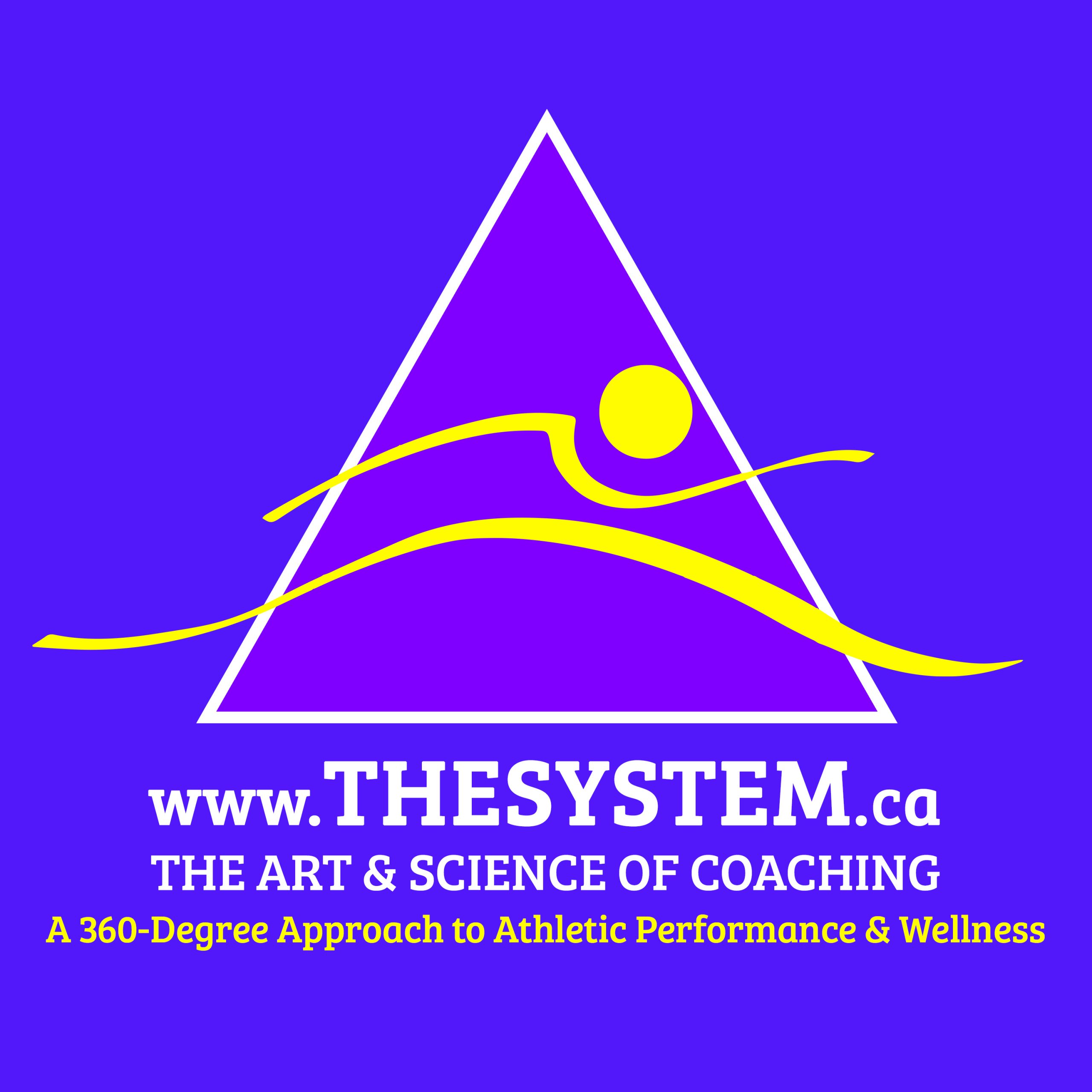Why is Integrated Conditioning (IC) Different?
Much of the Conditioning & Regenerative methodology used in INTEGRATED CONDITIONING (IC), is based upon the several approaches, which encompass a broad spectrum of areas often overlooked by most strength and conditioning coaches and personal trainers alike.
Sensory nerves receive information to process stimuli (i.e. hot, cold, sharp, dull heavy, light etc…) via eyes, ears, skin, jaw alignment and feet, to maintain, upright neutrality (i.e. keeping the eyes level to the horizon & judging distance from objects around us). This information is then sent to to the brain via the spinal cord, where it is analyzed and processed. The return signal or is then transmitted via motor nerves on how to react to the stimuli.
Correct Habitual and Conditioning motor patterning, must concentrate on multiplying the sensory input output stimulation as well as the speed of sensory/motor nerve communication. Overtime the Sensory nerve signals will be processed, bypassing the brain (i.e. analogue or dial-up), and within the spinal chord (i.e. reflexive loop or high speed) As the system is refined, it will no longer require the spinal tract, an move directly into a Fascial loop (i.e. hyper-speed). This would be akin to a much faster rate of reaction and force production. An example of this would be if one were to slip on ice and recover gracefully. EAP’s job is to enhance this system via not only sensory input output, but enhance the speed, co-ordination and force via INTEGRATED CONDITIONING (IC)
Add skill devopment post
INTEGRATED CONDITIONING (IC)
EAP advocates IC, largely because it is based upon CNS or Neural Conditioning, which encompasses, but is not limited to, the following areas:
Proprioception (Proprioception refers to the body’s ability to sense itself in space and under gravity. It does so via limb awareness and 3-dimentional joint alignment. Complex sporting movements, which require precision, rely on Proprioception to execute movements via a complex array of sensory input from various sensors (i.e. feet, eyes, skin, jaw alignment, vestibular equilibrium, that are related to balance & kinesthetic awareness), and outputs from motor nerves. By applying the correct conditioning regime, it is possible to increase the stimulation, increase the speed and frequency of the signals. This is important not only in everyday movements but especially so in athletics. The sensory input an output can be trained and advanced to a higher level, to increase the relayed between sensory and motor nerves. EAP trains athletes to improve in these areas via:
Co-ordination,
Neuromuscular Efficiency,
Tendon & Ligament Reflexes
Rate of Force Development (RFD) – speed at which a person can maximally contract a muscle and produce force
Myofascial & Bone Structure &
Maximum Voluntary Contraction
Proprioceptive exercises have been scientifically proven to reduce injuries an improve rate of force development, in both athletic and senior populations. They are also, by in large, completely neglected in most Elementary School, High School, Collegiate, and Professional Strength and Conditioning programs.
Heavy weights do increase performance for the first 1 to 3 sec, there after speed will decrease if heavy lifting becomes more prevalent. Most athletic performance requires two things: rate of force production and relative strength (i.e. power to weight ratio). Absolute strength (i.e. heavy weights) can be used, but must be quickly mitered with elastic development, so as to not ‘shut down’ the Neural System w.r.t. rate of force production a.k.a. speed-strength qualities.


INTEGRATED CONDITIONING (IC) also addresses:
Flexibility
Mobility
Plyometrics
(i.e. Elastic Strength focuses on activation of the Stretch-Shortening Cycle (SSC) a.k.a. the Stretch Reflex. SSC is frequently present during athletics, due to the fact that most movements involve the two phases of muscular contraction done in rapid succession (i.e. eccentric phase or tissue lengthening (i.e. similar to a rubber band) immediately followed up by a rapid concentric phase (i.e. stored energy created by the eccentric phase or tissue lengthening causes a greater force output via the concentric or tissue shortening phase). This has been proven to generate a large amount of force in a very short period of time…the rate of force production or “SPEED!”
An example SSC is the quick countermovement after jumping off a box and landing (i.e. quadriceps stretched eccentrically), then immediately jumping back on to another box (i.e. stronger concentric contraction).
The amount of tension generated by the stretched muscle, is dependent on the magnitude of several factors:
-
The height of jump
-
The current elastic condition of the muscles
-
Any restrictions in the tissue
-
The type of surface jumping on to (i.e. hard vs. soft)
-
The amount of pre-stretch or tissue lengthening
-
The speed at which the tissue recoils back
-
Current standing posture
-
The integrity of the whole body to create a counter brace against the forces created
-
The type of muscle fiber dominance the athlete has in their body
-
Any predisposing anatomical idiosyncrasies (e.g. wide hips will increase the knee from coming in medially upon landing
Acceleration
Speed (i.e. rate of force development)
Speed-Endurance
Explosive Strength
Maximum Strength
Muscular Endurance
Regeneration
Prolonged heavy lifting (i.e. > 80%) can potentially inhibit the ability to perform complex rapid motor tasks, which are required during most technical phases of athletics. Although the force generated during heavy lifting, may be large, the movement to generate that force is done at a much slower rate. This contrast inhibits (i.e. both agonist an antagonist muscles, fight for dominant movement supremacy) the ability to maximize the elastic properties of the contractile elements required for rapid speed and power force production.
“The amount of force required to move a 300lb barbell bench press is 3-times less than the force require to maximally throw a 35lbs medicine ball”
Maximal weights merely help build the tendinous and ligamentous strength by providing the ‘structure’ from which speed and power may reach a greater potential. Therefore, as mentioned earlier, maximal weights by themselves are a means to an end but not a end in itself w.r.t. speed and power force production.
“The influence of maximal isometric strength on dynamic force and velocity is greater in heavily resisted, slow movements, although there is no correlation between maximal velocity and maximal strength”
“The Science and Practice of Strength Training”
Zatsiorsky, 1995
So the question remains, “why do a majority of individuals, high school coaches, including college coaches, still cling to the notion that heavy weightlifting, by itself, will make them better athletes?
“Continuous use of Maximal Strength conditioning will teach muscles to contract at a slow rate despite the force being high”
The answer partly resides in tradition, propaganda and ‘half-baked’ science. The equation for Force is as follows:
Power = Mass x Acceleration
Mass pertains to Maximal Strength (MS), whereas Acceleration (A) refers to Speed (S). From a pure mathematical perspective, increasing MS will give you Power, but only for the first 1 to 2 sec. Increasing S will also give you the same result. However, between these two extremes lie several things, which the equation does not fully address. They are, and not limited to:
-
The physical state of the athlete – do they require more M or A?
-
The needs of the sport itself – is the effort short lived or is the effort required for a much longer duration.
-
The athlete’s prior injury history – subjecting a ‘damaged’ athlete to loads, whether it is from an M or A perspective, may not be the wisest thing.
-
Does the athlete have the proper Regenerative services available to him/her, thus warranting the use of either M or A conditioning?
-
The current state of the athlete’s Proprioceptive Sensory System – prior concussions and or a combination of past soft-tissue injuries, which has left ‘scaring’ in the myofascial web, will alter sensory perception. Thus even though the athlete may be standing on two legs, the body perceives it as if he/she is upright on one leg only.
-
Does the athlete have the Structure (i.e. the correct tension and mass patterns in the body) to assist itself in the complex task of upright neutrality – maybe some ‘Body Building’ may be required to assist in developing mass to buttress (i.e. shore-up or brace) the skeletal structure to contend with the force of gravity.
-
Does the athlete have the Neuro-muscular co-ordination (i.e. Right and Left Brain co-ordination) – increasing proper and balanced communication between both hemispheres of the brain can rapidly increase strength.
-
Are the feet, eyes, and jaw alignment operating on a hyper-speed level – Foot strength, balanced eye muscles and jaw alignment all influence force buffering from the ground up. All three receptors work in a complex manner to generate a sense of postural awareness. Altering one or more of these elements can alter posture, thus negatively impact athletic performance.










